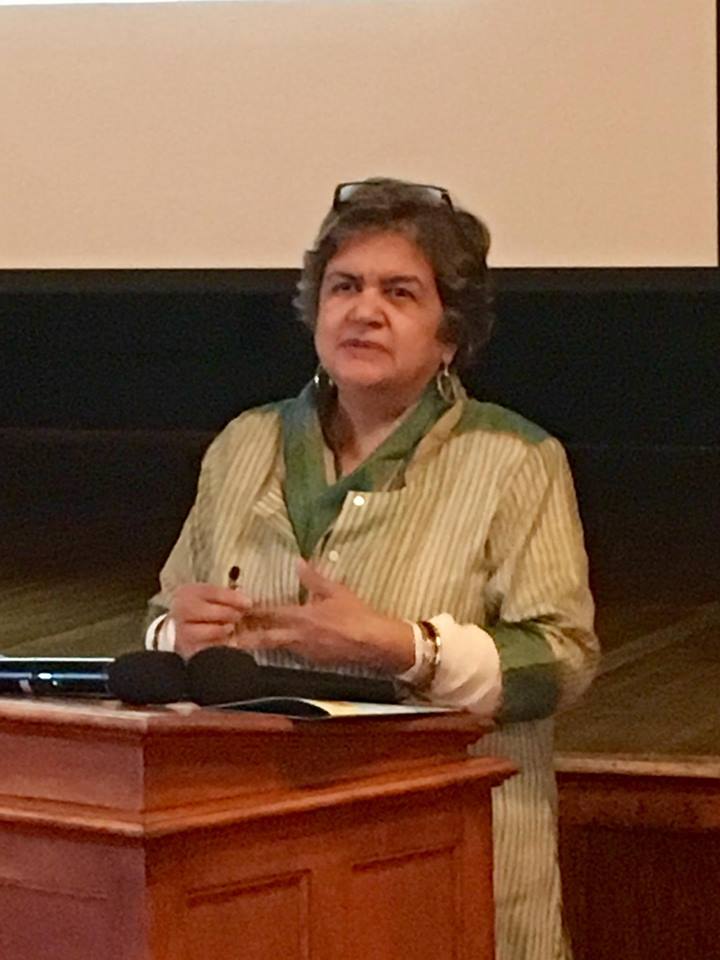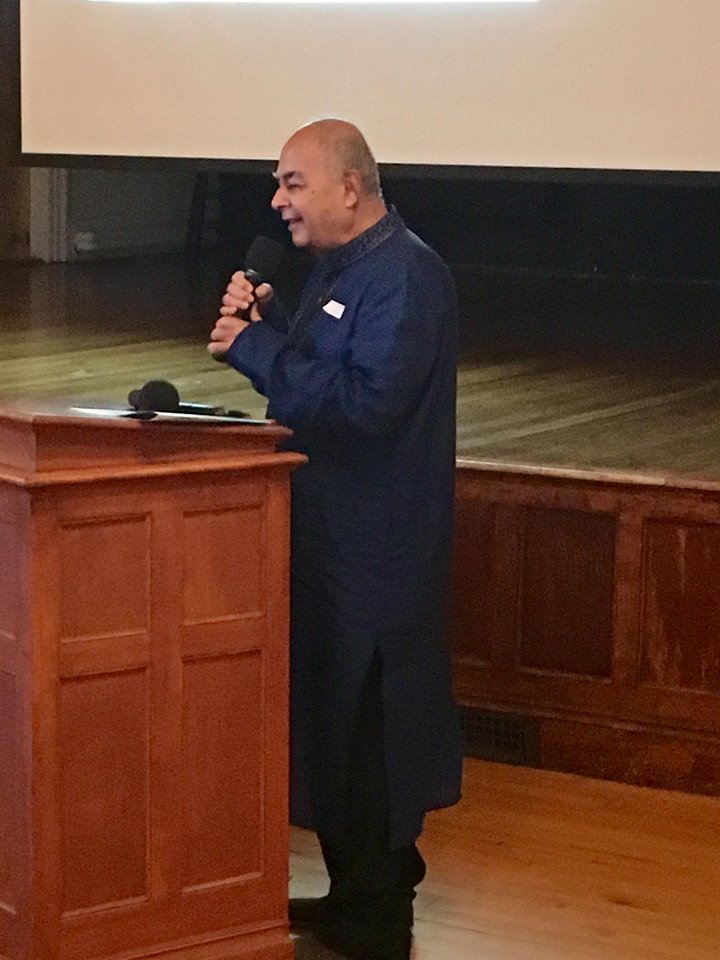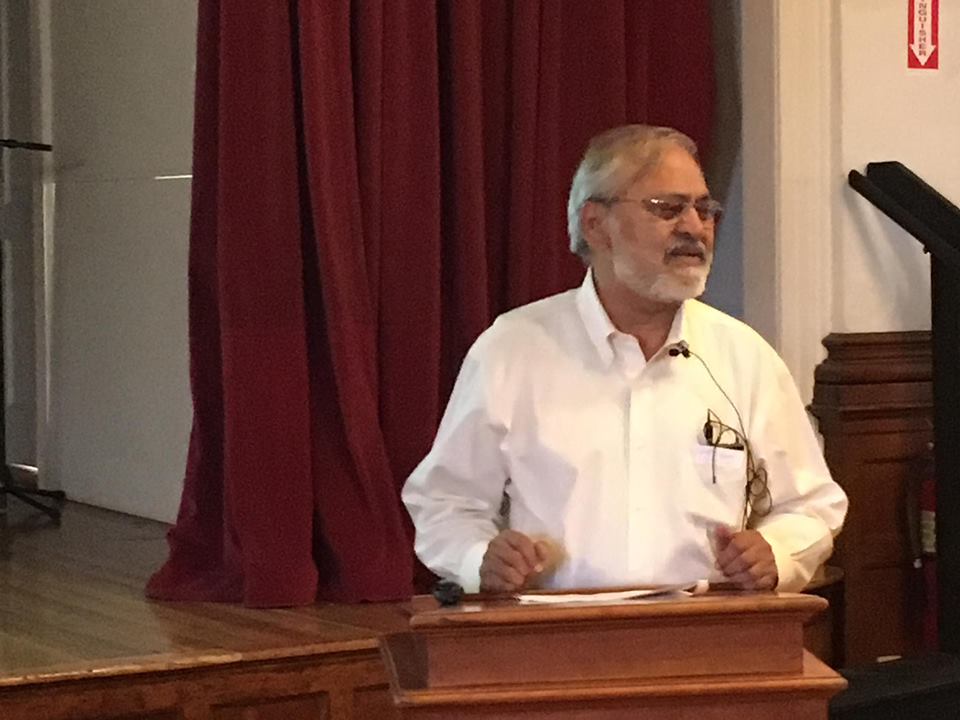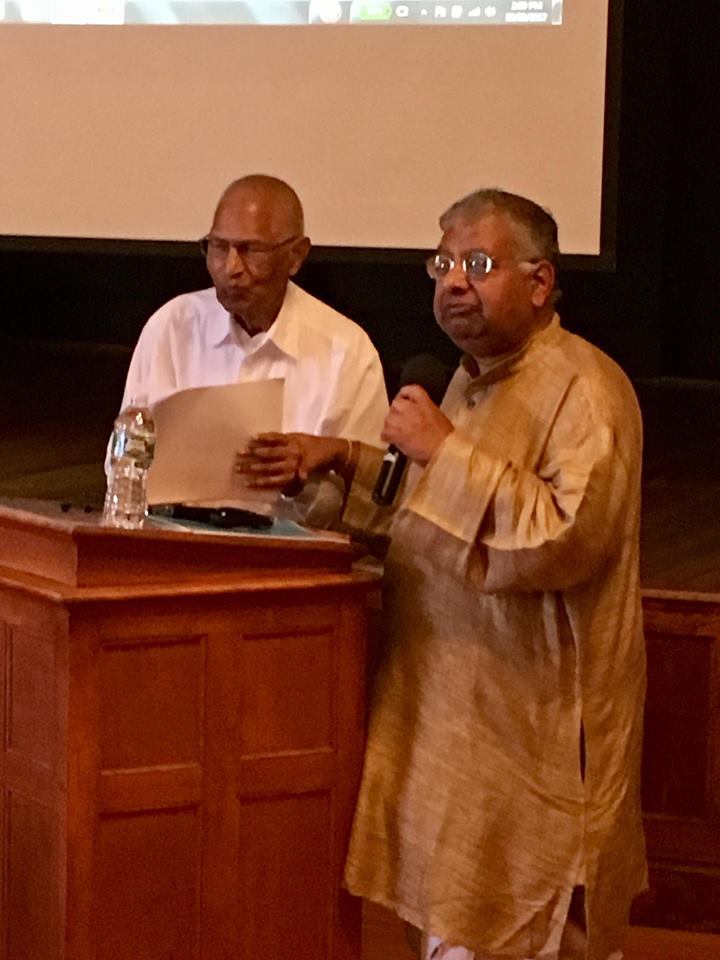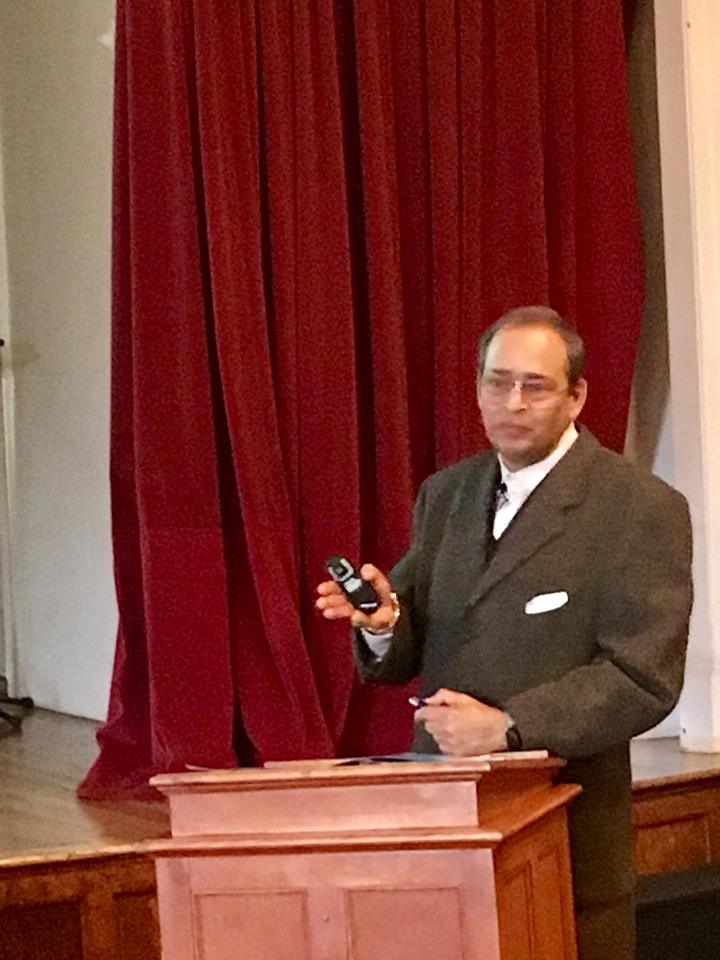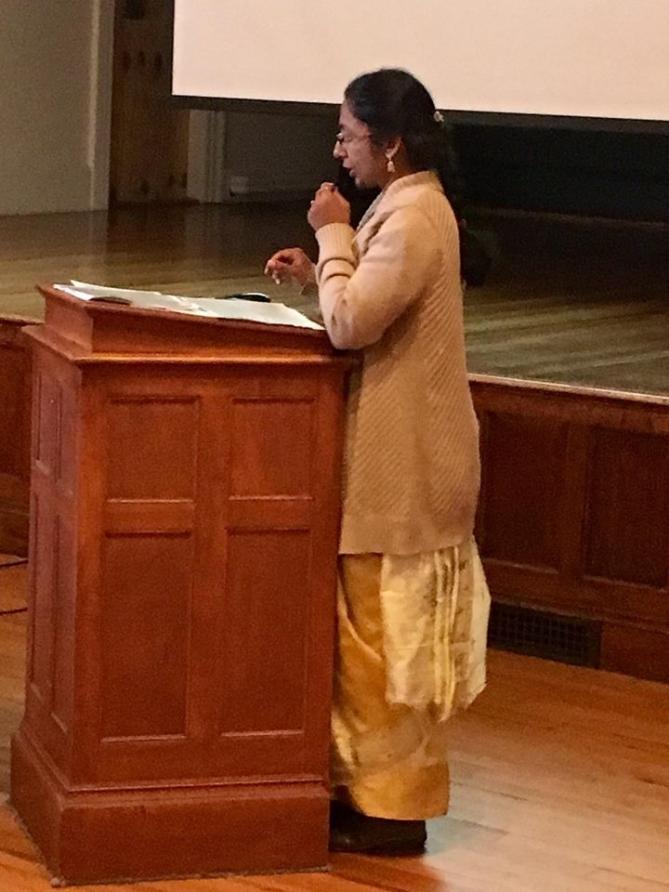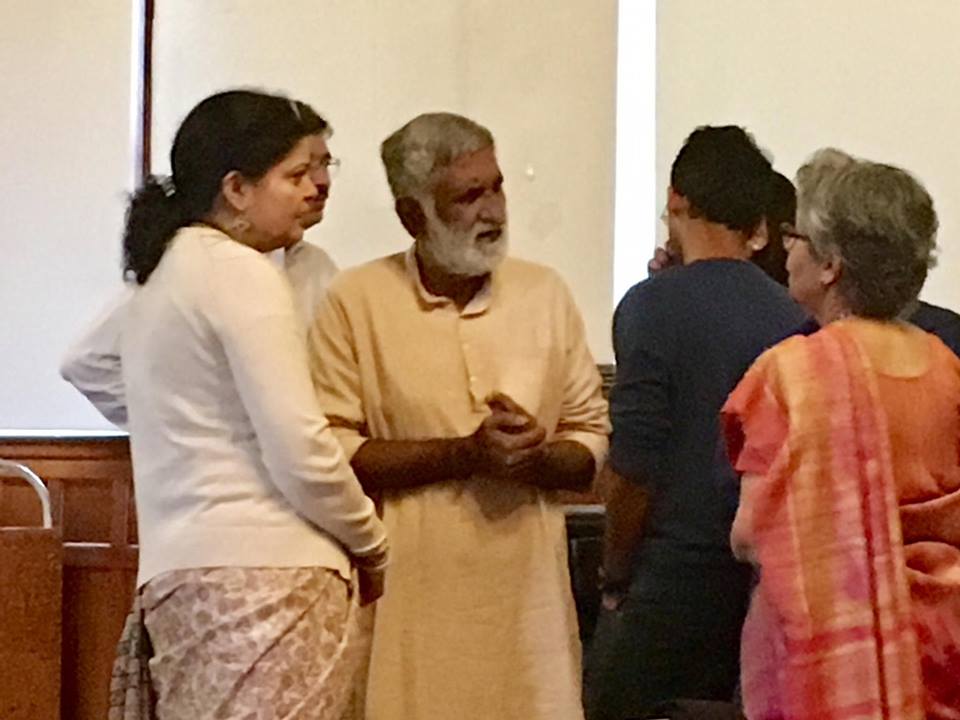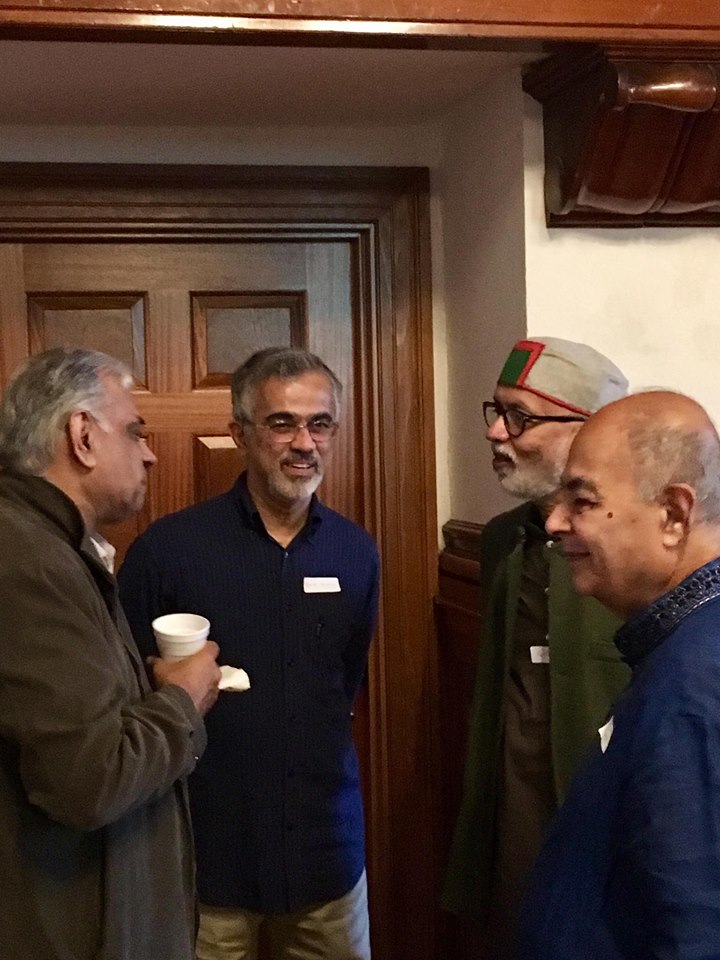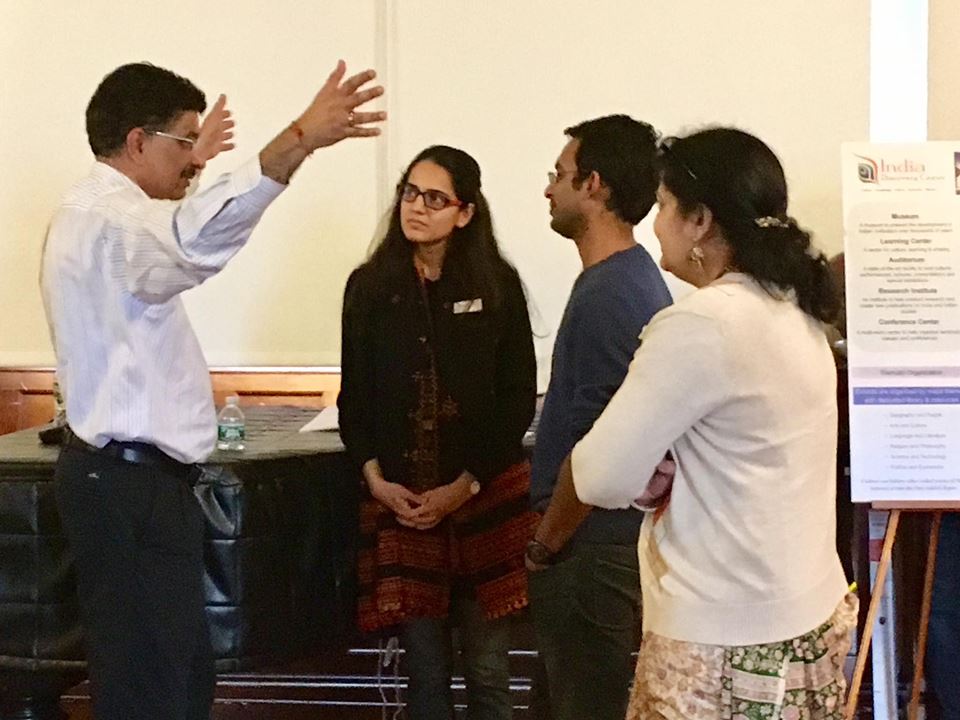Contribute
| The Classical Period Defined Conduct And Established Literature: Part II |
Satyendra Sharma
01/18/2018
(This article is sponsored by Masala Art)
The Classical Period defined Conduct and established Literature- Report of IDC seminar, October 2017 Part II – Summary of the Presentations India Discovery Center presentations are segmented in six tracks – (i)Geography and People, (ii)Art and Culture, (iii) Language and Literature, (iv) Philosophy and Religion, (v) Science and Technology, and (vi) Economy and Politics. The Geography and People presentation was made by Dr. Hemendra Acharya, a veteran geophysicist and a writer. Mrs. Srilakshmi Srinivasan, a dancer and a vocalist, handled the Art and Culture track. Mr. Prem Nagar, a computer professional and a language researcher, presented the Language and Literature track. The Philosophy and Religion track was presented by Dr. Satyendra Sharma, a physicist and a student of philosophy. The astrophysicist Dr. Bijoy Misra took care of the Science and Technology stream. The finance researcher Dr. Arun Karna presented the stream on Economy and Politics. Geography and People – The period began with the establishments of sixteen mahÄjanapadas, scattered over the map of India. These autonomous blocks acted as population centers with local economy and administration. There were occasional conflicts between the groups, but no wars are recorded. Chandragupta Maurya from Magadha expanded his territory and tried to establish the first Indian Empire. By the time Alexander invaded India, a national defense system was already in place. The Maurya dynasty culminated with the empire of Ashoka, who expanded the boundary of the Union to the border of Persia on the west and to China on the east. The Vedic classification of people into social classes continued and was reinforced by Chanakya as a social model. The Buddha and the Jaina Tirthankar Mahavir preached their faith freely in the country. Buddhism spread rapidly through traveling monks and dialogs. Iron tools helped create an agrarian and prosperous society. Written rules of social interaction and administrative principles made the society organized. There was strong emphasis on education, art and engineering, with some of the largest universities operating on the soil. Maritime trade flourished. With maps, charts and timelines, Dr. Acharya established that the period was one of religious tolerance and massive economic expansion associated with general prosperity. Art and Culture – Mrs. Srilakshmi Srinivasan developed a thought that art in the period was influenced with meditation leading to new designs and unique pieces of creations. Pottery and terracotta pieces have been discovered all through India to suggest art work on the daily utensils. Art on tree bark and palm leaves and on rock caves give a variety. Wall art and floor art as prevalent in India currently, most likely had their origin in the Classical Period. Stone carvings and sculptures gave a different look to the landscape with the construction of stupas, chaityas and pillars. Musical art and dance possibly had already developed. They were given classical structure through the formulations in the encyclopedic compilation of NÄtyashÄstra. The ancient art of storytelling developed into literary productions through the development of structured grammar. Knowledge and production of a variety of musical instruments show public appreciation of performing arts. Open-air festival production gave way to stage productions with their organization of the actors, musicians and the audience. People’s faith did not seem to conflict with their cultural integration. Good skills and living practices transcended faith. Women used dresses and ornaments and there was exhaustive use of flowers in daily operations. The society was orderly with less crime leading to peace and stability. Language and Literature – The compilation of Sanskrit grammar by Panini heralded an era of organization and structure in language. The knowledge and analysis in different disciplines could then be properly codified than left as discourses. The development of script and writing helped the knowledge development tremendously and India had literary contributions in all known fields of knowledge. Astronomy, geometry, mathematics, music, dramatics, philosophy, social conduct, administrative principles, jurisprudence – all had their development in the large map. The spoken languages like Prakrit also got organized and grammar was developed. The texts of Prakrit grammar are not located yet, but are believed to be older to Sanskrit. Prakrit gave rise to PÄli, the language Buddha adopted for his lectures. Prakrit also took regional flavors developing ArdhamÄgadhi, Sauraseni and PaisÄchi languages. Mahavir adopted ArdhamÄgadhi for the Jaina teachings. In parallel, Tamil language developed in the south and prospered. Complete linguistic variation of the languages of this time has not been done from a scientific view. While epics were the mainstay in the literature, philosophical and analytic texts developed including the codification of knowledge systems into the sutras. Cryptic in construction, the sutra process helped massive works to be retained in memory and help propagate to students and countries. Exchange of information between regions inside the country and across the boundaries was enormous. Philosophy and Religion – The period was instrumental in developing the philosophical foundation of India. The analysis of the Vedas gave rise to distinct philosophical systems, the chronology and the process of evolution have not been fully established. It can be speculated that the examination of “truth†led to the Nyaya system, and the addition of time brought in the Vaisheshika system. The search for a foundation of the universe helped develop SÄnkhya and the tools to discover the foundation led to Yoga. A negotiation to create a social conduct called for MimÄmÄsa and the unification of all became the Vedanta. Karma formed the basis of all faith systems. While human actions were defined as the karma, there was difficulty in determining the cause of suffering and remedies thereof. The Vedic principles ascribed the suffering to the curse of the “gods†and prescribed rituals to escape suffering. Some thought that the human suffering was due to human failings and prescribed methods of restraints and austerities. While the latter did not have a closure, a compromise prescription was to perform the rituals following the austerities. Buddhism provided a short-cut to accept the sufferings as a part of life and follow monastic living to detach oneself from new suffering. The Vedic religion, lately called the Hinduism, was the predominant faith, along with Buddhism, Jainism and many old animistic faiths. There was massive religious literature. Anthropomorphism did enter through the Greek influence and iconography became a regular industry by the end of the period. Science and Technology – The principal finding in the classical period sciences was the analytic discovery of human mind and the understanding that the mind could be an entity by itself, separate from the body. Mind is expansive and possibly covers the entire universe through imagination and through creative manipulation. Good health demands that one has a good mind, but a good mind can only be attained through purity in living and respecting the existence in the universe. Massive literature in health science, nutrition, plants and medicines developed to help in public health. Healing was prescribed to connect with conduct and truthfulness than application of medicine. Astronomy and geometry developed to fulfill the needs of the rituals, and mapping of shapes became a mathematical discipline. Development of grammar and understanding of phonology gave rise to intricacies in prosody and mapping of human voice to cosmic sounds. A whole science of cognition and perception developed to distinguish truth and untruth in thinking. There was deep analysis to understand the senses and probing the reality of nature and the cosmos. Mind was a synthesizer, but it needed the stillness of mind to comprehend an object in its “realityâ€. Carpentry, stone carving and metallurgy prospered with large construction projects of palaces, dwellings, roads and monasteries. Iron making and engineering in steel technology helped in building monuments, statues and pillars of large dimensions. Textile and silk were produced and exported. Gem-cutting and creation of ornaments became an art. Economy and Politics – The Classical Period was regulated by the Vedic principles, and was profoundly influenced by the scholarly compilation of economic and political principles by the great Chanakya, who possibly lived in 4th century BC. The social structure was prescribed to have four classes based on aptitude, not necessarily by birth. Each class had its own duties and privileges. The remuneration recognized the intensity of labor and the punishment was more severe if one abused the privilege. The society seemed to accept the principle and there was all around economic prosperity. The Janapadas were economically independent units with a federal arrangement of the central monarchy for communications and defense. Trade and export were the official policy. Taxes were levied on the quality of the land, one sixth of the produce was an average fraction. The taxes were relaxed in case of draught or floods. The priestly class did not pay taxes, but were supposed to serve all on notice. The schools, teachers and monasteries were exempt from the taxes. Education was free, but the students were supposed to put in labor during their period of instructions. Individual teachers could charge fees for specialized training. The earlier kings and the Mauryas were known to have amassed massive army. Though Persians did enter through the northwest leading to Alexander’s invasion, the land was governed in peace during the period. Profound developments in art, music, language, sciences, astronomy and sciences led to the successive period known as the “Golden Period†in India. India Discovery Center is a non-profit organization based in Lincoln, MA, USA. For more information and the copies of the presentations, please visit http://www.indiadiscoverycenter.org
You may also access this article through our web-site http://www.lokvani.com/
